PRESTO PLANS
Sent straight to your inbox
CLICK HERE TO ACCESS
Sign up to receive 10 ready-to-use ELA resources your students will love!
10 FREE ELA RESOURCES
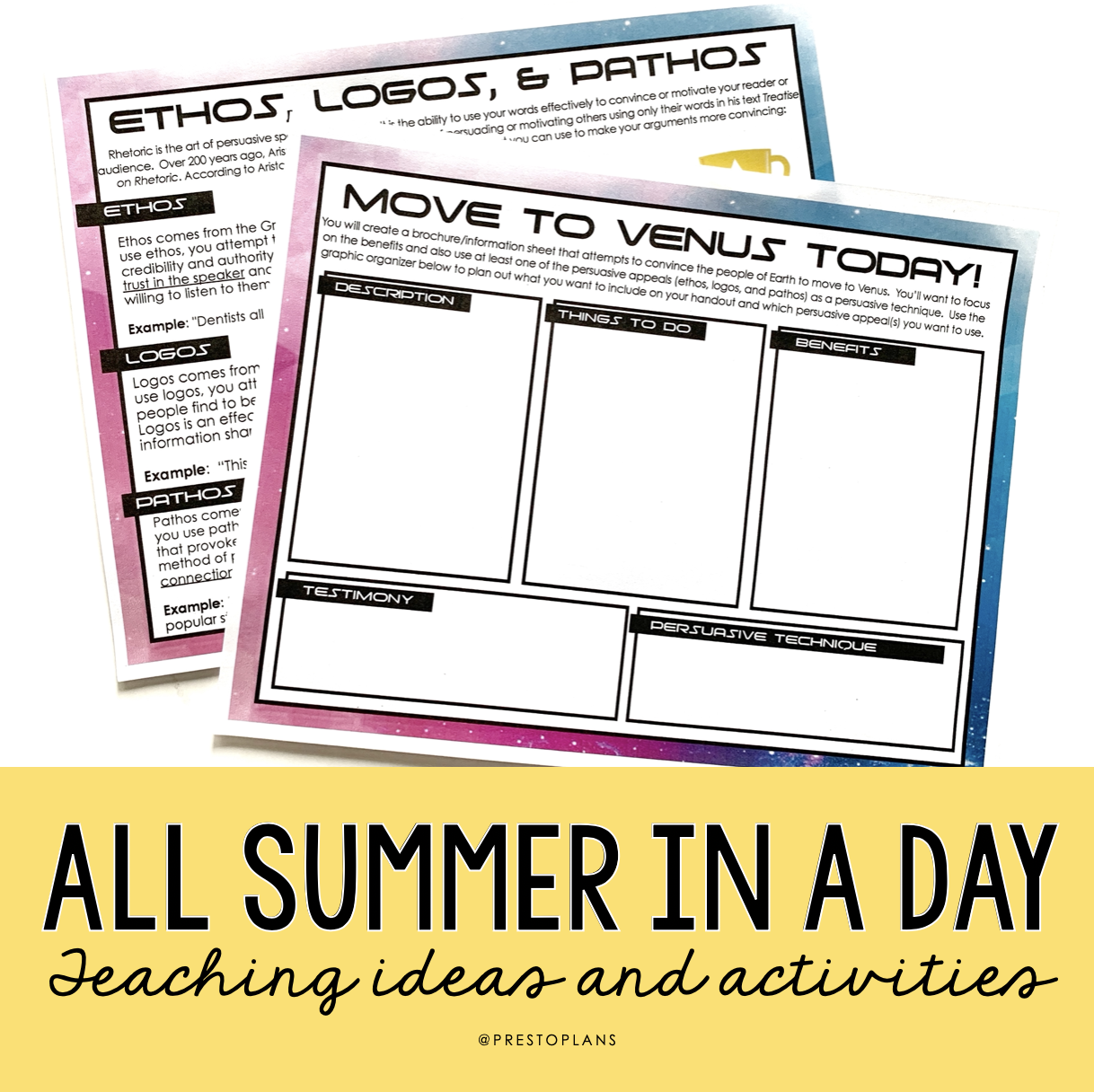
Teaching All Summer in a Day by Ray Bradbury
If you are teaching “All Summer in a Day” by Ray Bradbury, you may be looking for tips and strategies for getting your students to dive deeper into the story. I am excited to share my best tips for helping you navigate all elements of this science fiction tale with your students.
Bradbury’s “All Summer in a Day” is set on planet Venus where, in this story, it rains constantly and the sun only shines once every seven years. Margot, the protagonist, is the only one of her classmates who hasn’t always lived on Venus. Her deep appreciation of the sun is mocked by her peers who are ignorant of its beauty. But just before the sun comes out, her skeptical classmates do something so cruel that leaves the reader shocked and saddened.
So, where to begin when teaching “All Summer in a Day”? Below are some tips to bring this story to life for your middle or high school students.
Build Background Knowledge
Before introducing any short story to your students, I would suggest providing any context that students may need to fully understand the background of the story. When teaching “All Summer in a Day,” I like to provide relevant information on a few elements of context in particular:
- Author
- Historical Context
- Genre
Start by giving students a little background information on Ray Bradbury himself. Bradbury was an American author known for his fantasy, science fiction, horror, and mystery fiction writings. You might also want to tell students that the inspiration for his 1959 story came in response to the space race that was taking place between the Americans and the Russians. Both countries were fighting to see who could get a man on the moon first!
I like to also give students a bit of information on the genre of the story, which is distinctly science fiction. The science fiction genre explores the possible future impacts of technology and theorizes what scientific and technological advancements may become possible and how they will influence society.
Pre-Reading Discussion
Before jumping into reading the story itself, I always like to engage students in pre-reading discussion. The questions you ask here do not need to be specific to the details of the story. Instead, it can be a good idea to use this opportunity to warm students up to some of the broader ideas that come up, even indirectly, in the story. Here are a couple of examples of pre-reading discussion questions you might use for Bradbury’s story:
- “Does weather affect your mood?”
- “Do you think that people will live on different planets during your lifetime?”
- “Have you ever acted out of jealousy? Explain.”
Questions like these allow your students to make text-to-self connections—even before they’ve read the first page of the story!
Reading Comprehension Quiz
Once students have finished reading the actual story, I usually like to give them a brief comprehension quiz. This is just a quick check to see if the students understood the story. This is not something that I would typically keep a grade for, but I do like to go over the answers in class to make sure everybody understands what happened before we move into analysis. For the comprehension quiz questions, I tend to keep it pretty basic at this point with questions like “Describe the environment on Venus and how people lived” and “What was special about Margot?”
Vocabulary in Context
Next, I like to get students to complete a vocabulary in context assignment. Students use context clues to infer the meaning of underlined vocabulary words from a selection of quotes in the novel. I provide students with multiple-choice options of the definition below each quote. Once they complete this section, I have students write a short paragraph on a topic of their choice using at least 3 of the vocabulary words in the space below to improve their own usage of the new words.
Describing What You Can’t See Activity
In “All Summer in a Day,” Margot tries to describe what the sun is like to her classmates who have never seen it before, but her descriptions never seem to satisfy them. I draw on this element of the novel for this activity. I get students to partner up and try to explain things to one another—like clouds and chocolate, for example—with the assumption that the other has never seen what’s being described before. This exercise is an engaging way to activate your students’ language skills. It also helps students understand the difficulty of Margot’s efforts to describe the sun in the story.
Simile & Metaphor Sort
Bradbury’s story uses figurative language to describe a new world, to explain the sun, and to enhance imagery. Students will demonstrate their understanding of the figurative language used in the story by having them sort examples from the text into metaphor and simile categories to reveal a mystery word. I also get them to take it a step further by having them explain two examples of each so that they can better understand why Bradbury would have used figurative language to enhance those descriptions.
Poetry Activity
After the students have been exposed to Bradbury’s tremendous use of figurative language, I have them do a little creative writing of their own. The dichotomy between dark and light imagery in the story lends itself well to the antonym diamante poem which is all about opposites! I get students to write an antonym diamante poem as well as a separate quatrain about the sun, rain, or another idea from the text. I provide instructions for adhering to both of these poetic forms so that students know where to begin.
Exploring Setting and Mood
Setting and mood are closely connected in “All Summer in a Day.” Bradbury skillfully uses descriptions of the setting to evoke different moods in the reader. For this activity, I have them examine the setting and consider how it impacts the mood by completing this graphic organizer with illustrations and evidence from the short story. I’ve found that students will sometimes struggle to accurately identify the mood of a story, often mixing it up with what we might consider to be the tone. Because of this, I provide a definition of mood at outset: a literary element that evokes certain feelings in the reader through words in descriptions.
Margot Characterization
What do we know about Margot in “All Summer in a Day?” Looking back on the story, it can be easy to focus solely upon the negativity and cruelty of her classmates. I like to make sure students dive deeper into Margot herself, and I do that using these two activities:
1. Character Exploration:
Character traits are often revealed through dialogue, descriptions, actions, and relationships with other characters. With this first activity, I task students with finding such examples from the text and show what these examples reveal about Margot as a character. For example, for “actions,” I would ask “What is something that Margot does that that reveals something about her as a character?” For relationships with other characters, I might ask “How does Margot react with the other students?” I continue this for dialogue and descriptions, and then students think of which adjectives they would use to describe her.
2. Margot’s Medical Evaluation:
This second activity connects elements of nonfiction to the fictional text. I get students to assume the role of doctor and read this medical information on Seasonal Affective Disorder. Then, using evidence from the article and from the story, I have them try to determine whether Margot has S.A.D. and why. I give them this graphic organizer to use for their medical report. This activity makes a real-world connection and integrates an informational text into your lesson.
Guided Analysis
Next, I put students into small groups, giving each one a guided analysis worksheet. Students will be given questions about important elements of the story, such as the theme, symbolism, and irony. Students work with their groups to come up with their answers using evidence from the text. After each question, students share their thoughts, and we review the answers as a class.
Mars One Project
Next, students will make a text-to-world connection by watching this video about the Mars One Project, a plan for human settlement on Mars. The Mars One Project is no longer happening as of 15 January 2019. A court decision was settled to liquidate the organization, bankrupting it in the process. However, this plan brings up interesting questions that relate to Bradbury’s story. After watching the video as a class, I ask my students the following two questions: “Would you consider going? Why or why not?” and “What challenges do you think you might face if you lived on another planet?” This is sure to spark some discussion!
Postcards from Venus
Now, it’s time to add in a creative element! Students imagine they are Margot and write two postcards to their friends and family back on Earth. From Margot’s perspective, they will write about what her life is like now and how she is doing now that she is living on Venus. For the first postcard, students will write as though they have just arrived on the planet. The second postcard will be written from Margot’s perspective after the incident in the closet.
Move to Venus Advertising Project
The final project that I do when teaching “All Summer in a Day” is the Move to Venus Advertising Project. Students imagine that they are a business that is trying to get people to go live on Venus. They will create their own brochures or posters that seek to convince people to participate. I start by giving them a planning sheet where they map out things like their description of Venus, the benefits of going there, and a testimony about the experience. I also encourage them to focus on at least one persuasive technique in their advertisement, drawing on this ethos, pathos, and logos information sheet shown below.
There you have it! In my experience, teaching “All Summer in a Day” by Ray Bradbury is always enjoyable. If you would like to grab a ready-to-teach bundle with all of the resources mentioned above, you can do so by clicking the button below.
Search the blog for what you are teaching
GIVEAWAYS
sent straight to your inbox!




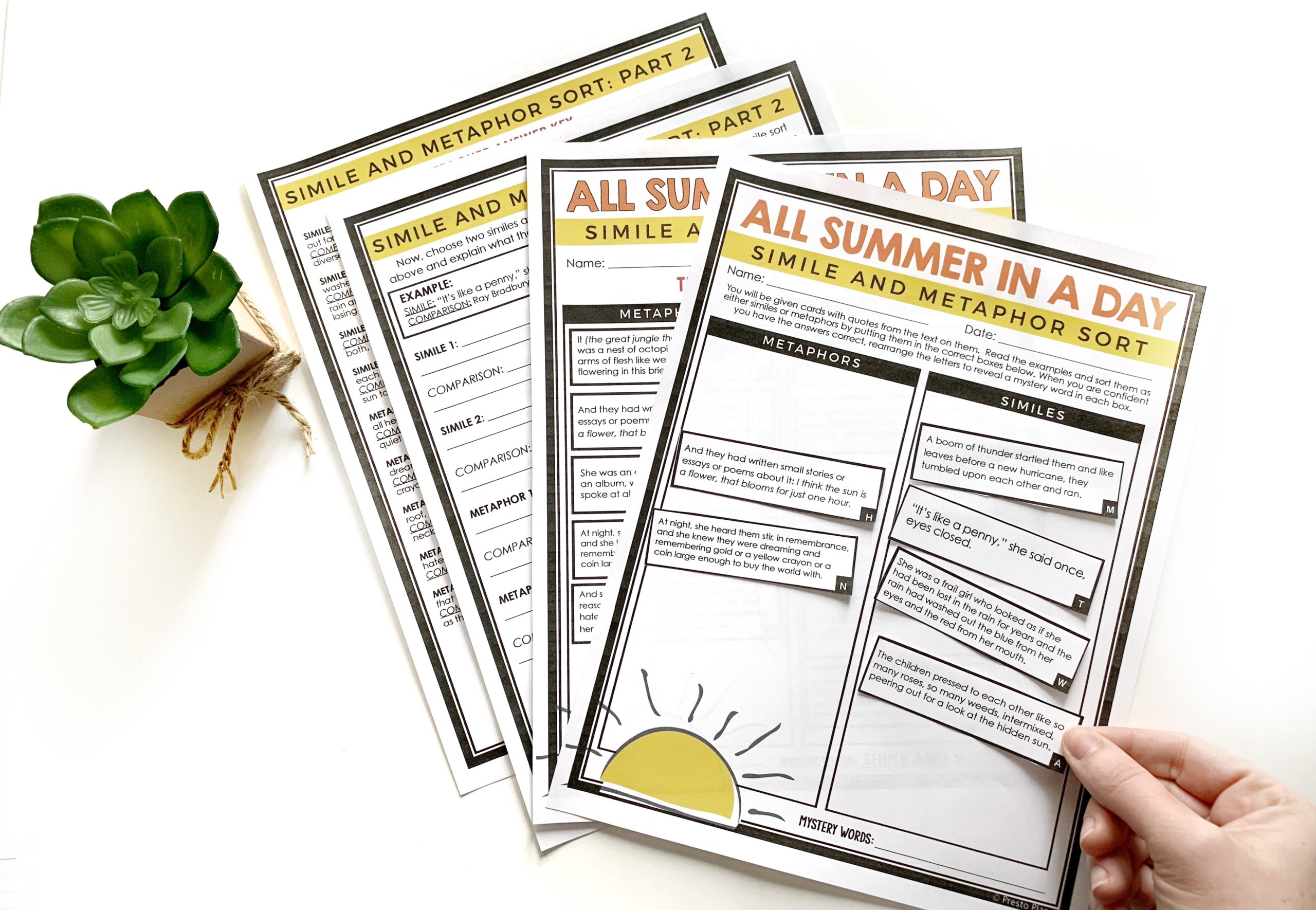

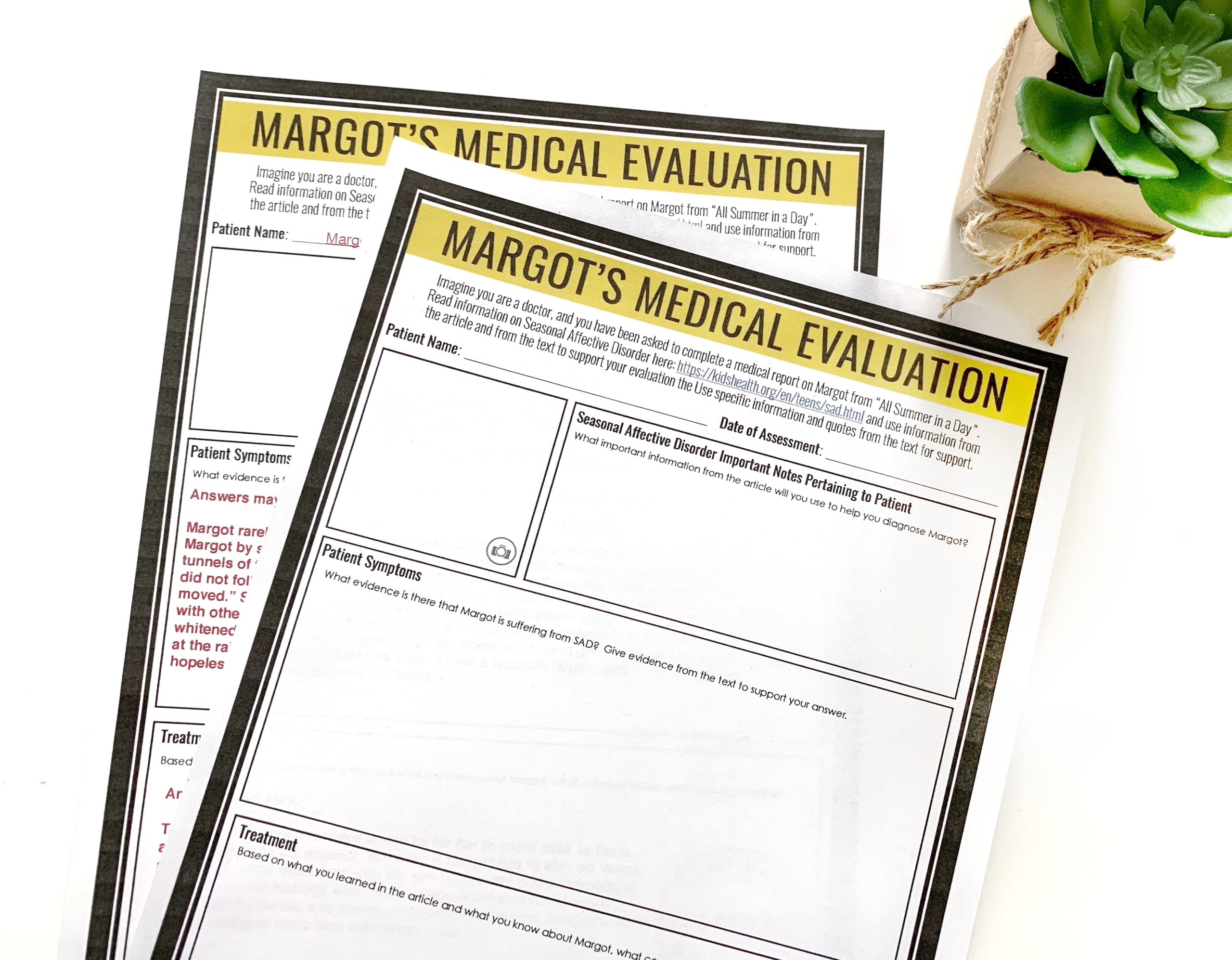
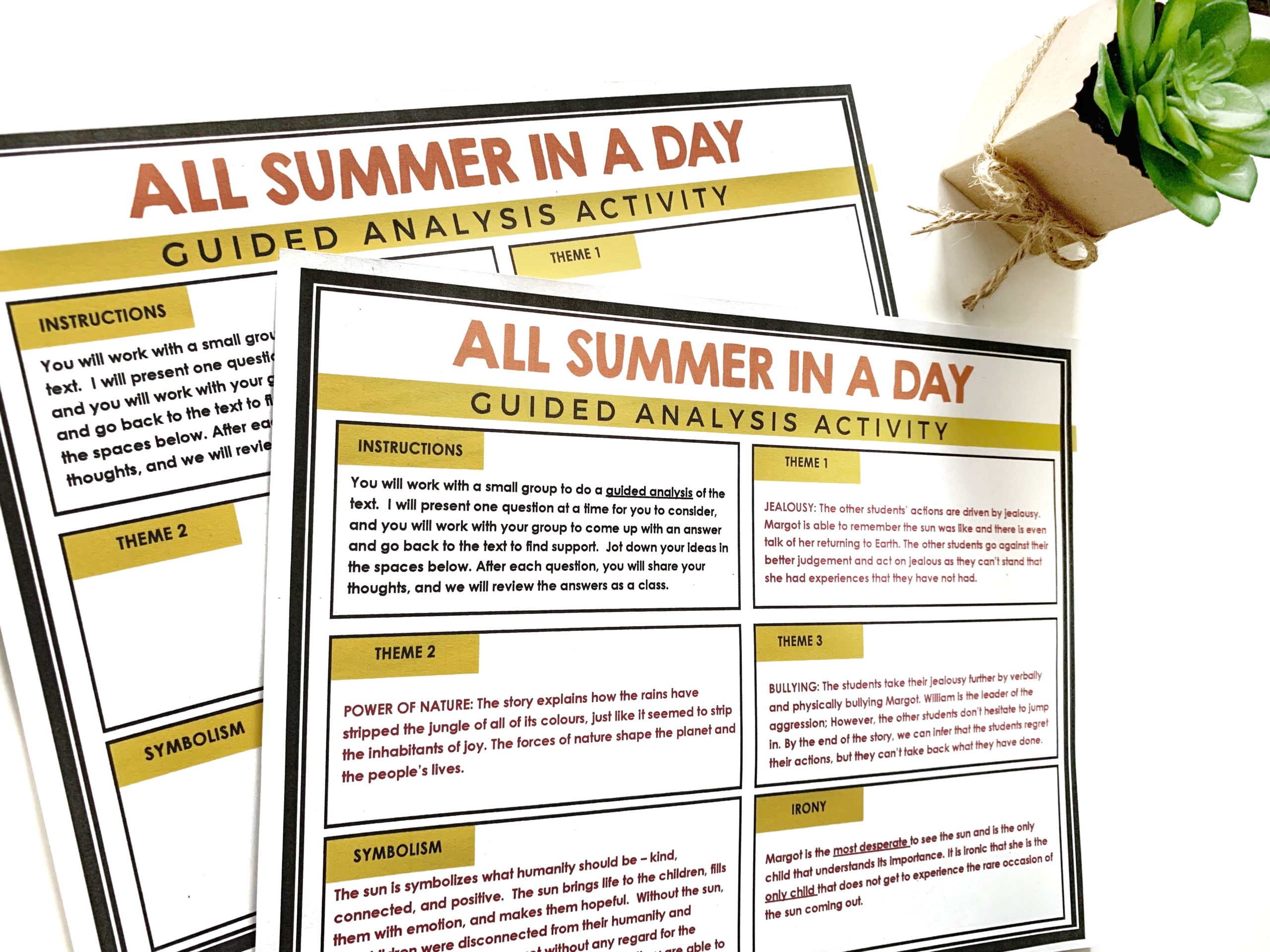

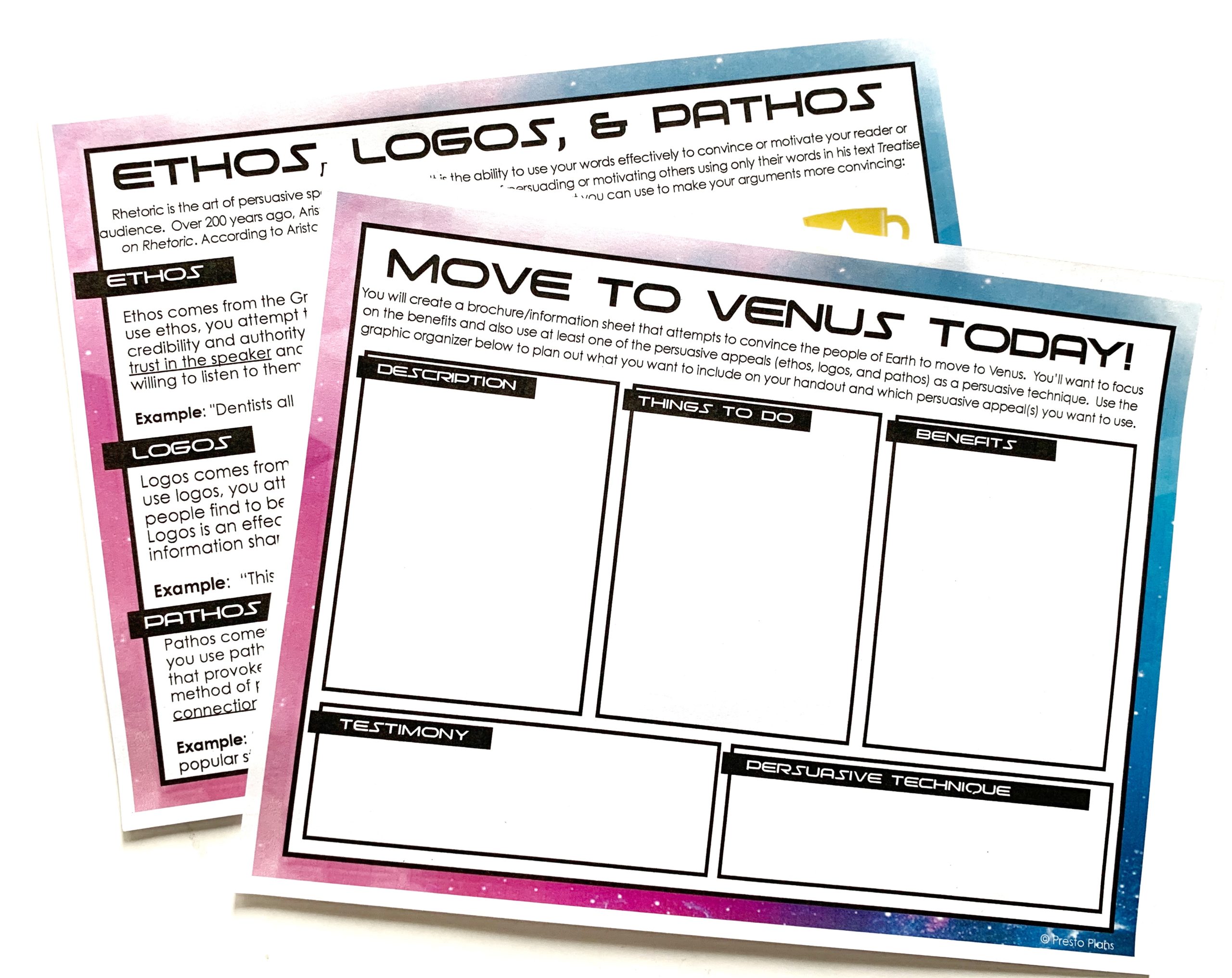
share this post